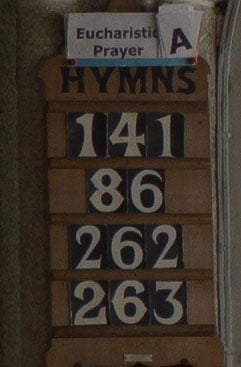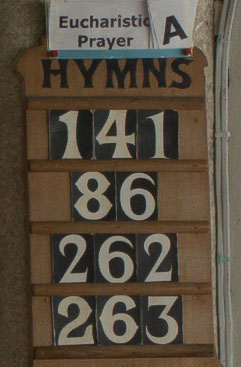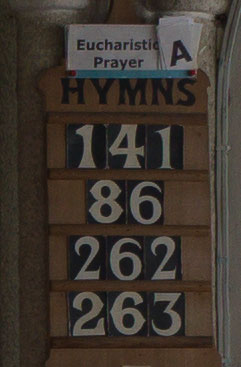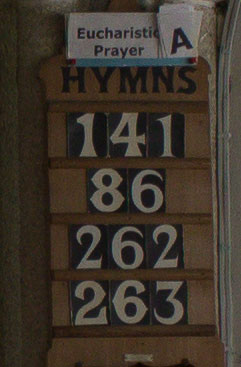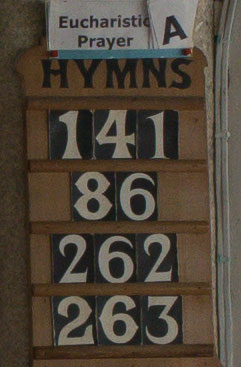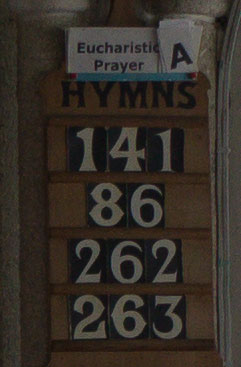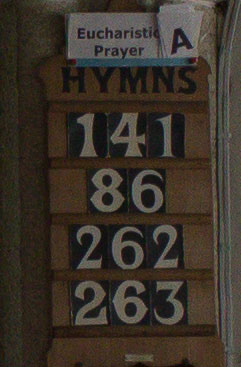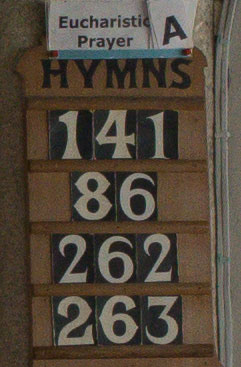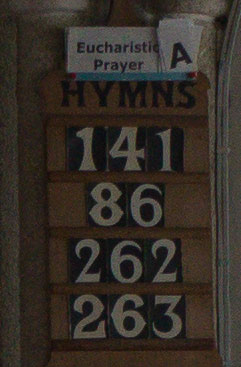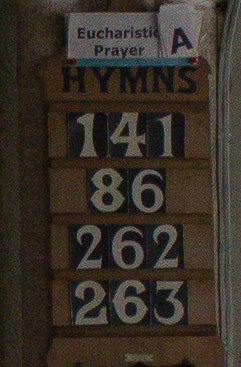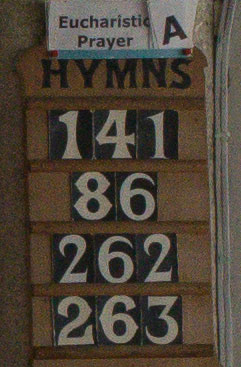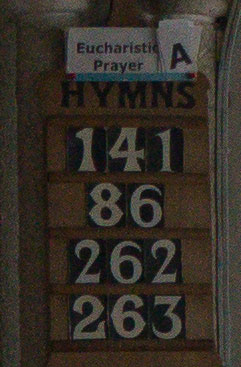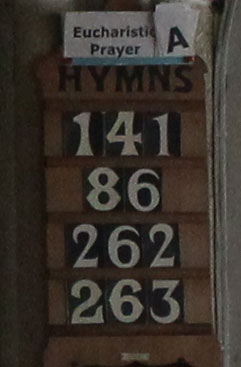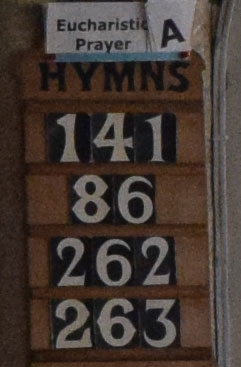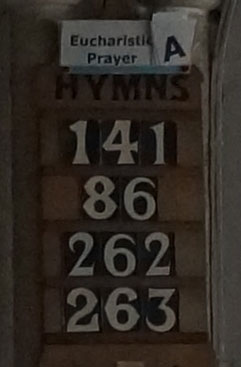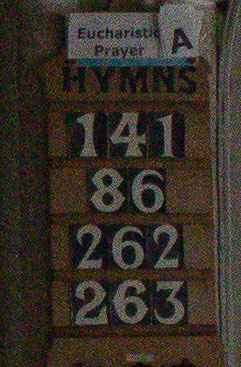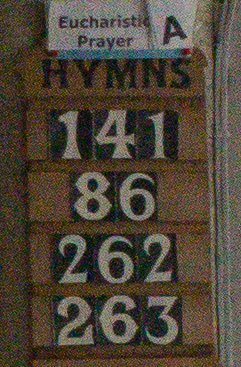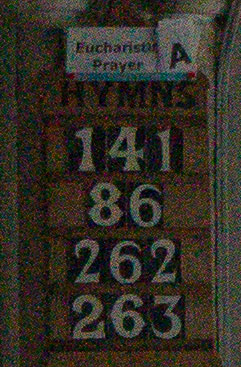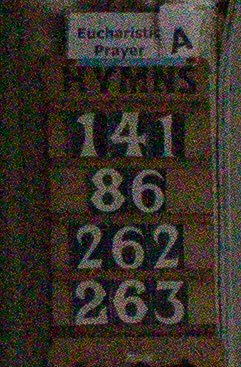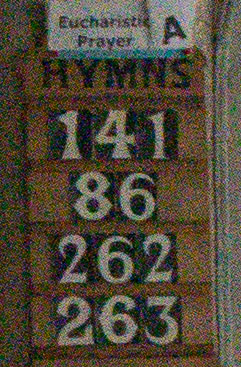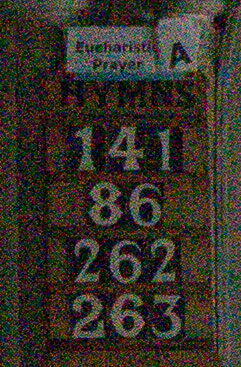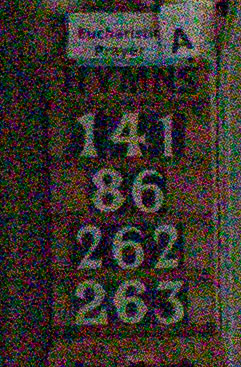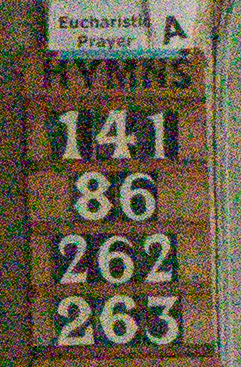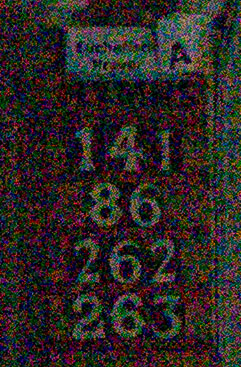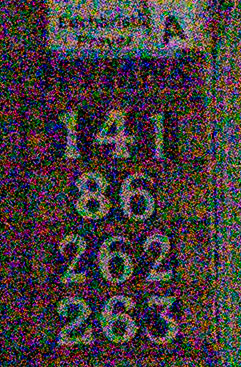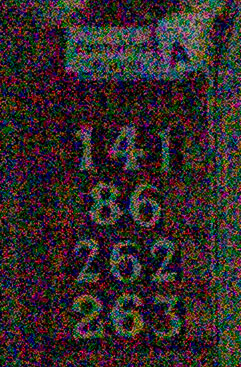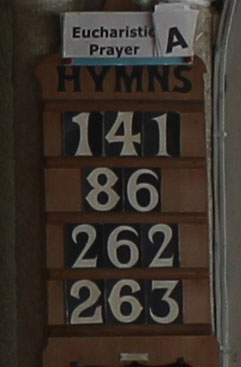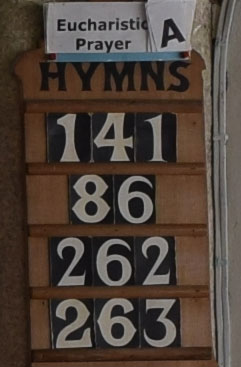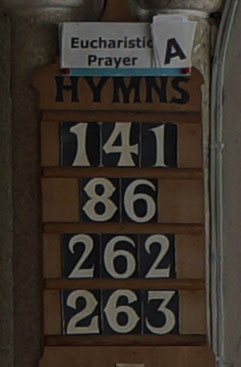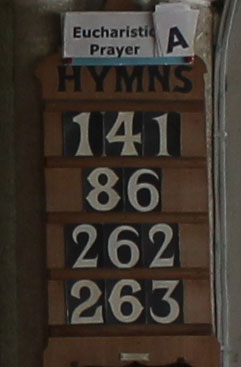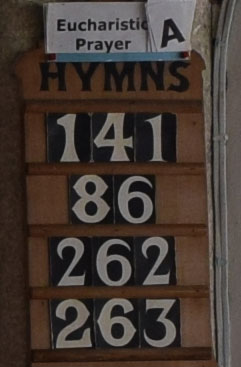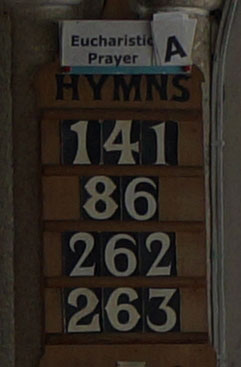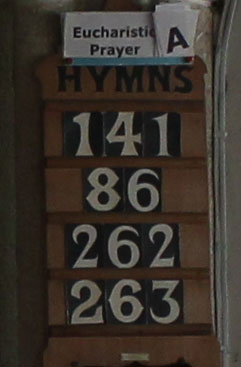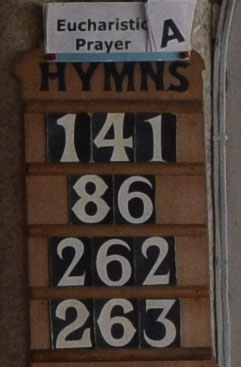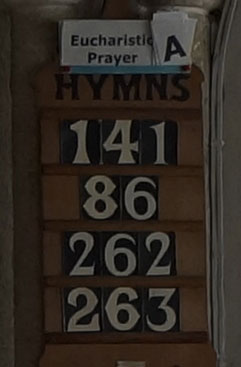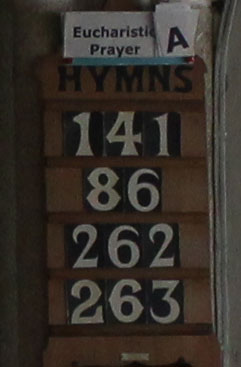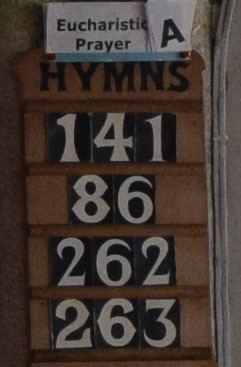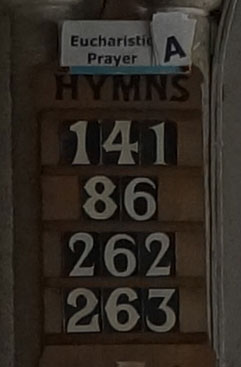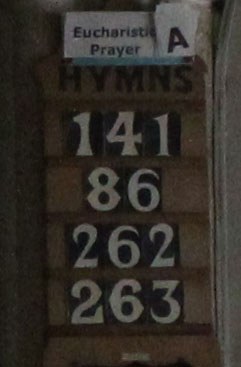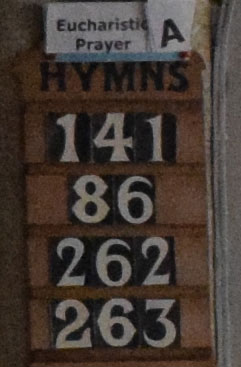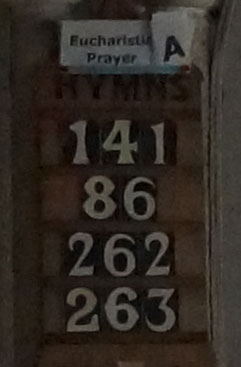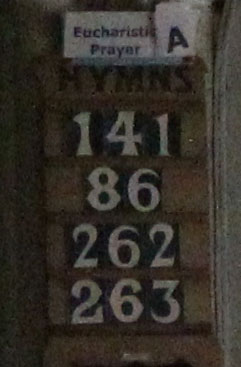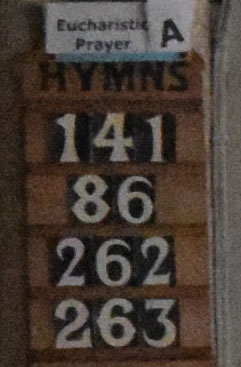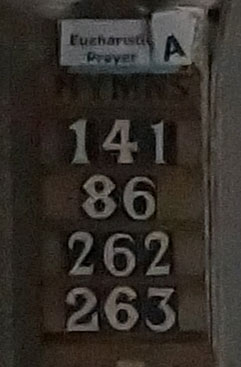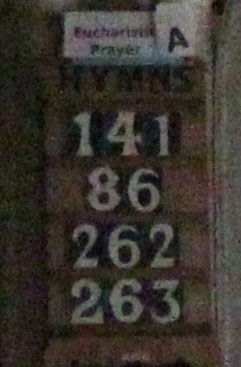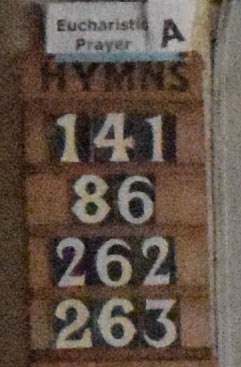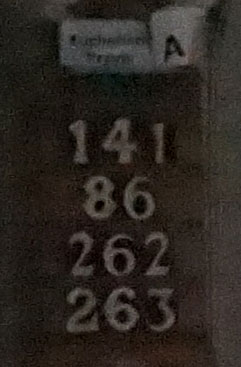Canon EOS T5 1200D review
-
-
Written by Ken McMahon
Quality
Canon EOS T5 1200D vs Nikon D3300 vs Sony Alpha A3000 JPEG quality
To compare real-life performance I shot this scene with the Canon EOS T5 / 1200D, the Nikon D3300, and the Sony A3000 within a few moments of each other using their best quality JPEG settings.
All three cameras were fitted with their respective 18-55mm f3.5-5.6 kit zooms and were adjusted to provide the same vertical angle of view.
For this test all three cameras were mounted on a tripod and set to Aperture Priority exposure mode. Image stabilisation was turned off and the camera settings were otherwise left on the defaults.
The image above was taken with the Canon EOS T5 / 1200D. I’d previously determined that the best results with the T5 / 1200D were produced with the lens set to f5.6 so I chose this in Aperture Priority mode; the camera metered 1/800 at 100 ISO. The Nikon D3300 and the Sony A3000 were also set to their base 100 ISO sensitivity settings and in Aperture Priority mode at f5.6 they too metered the same 1/800 shutter speed. As usual the 100 percent crops below are taken from the areas marked in red above.
The EOS T5 / 1200D has produced a respectable set of results for an entry level DSLR with an APS-C sensor. Though there’s variation across the frame from the edge to the centre, the first crop from the left edge of the frame is actually pretty crisp. The white window frames are a little on the soft side and there’s a tiny bit of colour fringing just visible, but the edges are well defined.
The second crop is from close to the middle of the frame and the acid test here is whether you can tell the time on the church clock, I reckon you can quite easily make out that it’s around twenty past eleven. There’s a good level of detail in this crop, but it still looks a little on the soft side to me. The third crop shows the lighthouse and though you can make out the separate lamphouse at the top of the white column, the edges aren’t as sharp as they might be and there’s a slight red fringe to the right of the lighthouse.
In the final crop from the right edge of the frame the detail is visibly softer than in the centre and the chromatic aberration is back, though again the fringing is only just noticeable. So a good set of results overall for the T5 / 1200D, marred just a little by the overall softness. I suspect the T5 / 1200D’s sensor would produce more detailed results with a better lens, though it’s possible some of the softness is a consequence of the in-camera JPEG processing, how much will become apparent in my RAW tests on the next page.
Comparatively, the Nikon D3300’s crops overall look a little sharper and more detailed than those from the T5 / 1200D. As well as a higher 24 Megapixel resolution producing a smaller crop area with bigger detail note that the D3300 dispenses with the optical low pass filter which is undoubtedly contributing to the improved sharpness. Similarly, the Sony A3000’s 20 Megapixel sensor results in a slightly smaller crop area but in terms of quality its results look fairly evenly matched with those from the T5 / 1200D. One exception is the first crop which suffers quite bad blurring on the A3000. Conversely, the fourth crop from the right edge of the frame looks a little sharper than the equivalent crop from the T5 / 1200D.
To see what benefit shooting in RAW can have now take a look at my T5 / 1200D RAW quality page. Or to see how these models compare at higher sensitivities check out my T5 / 1200D noise results.
Canon EOS T5 / 1200D With EF-S 18-55mm III | Nikon D3300 With DX 18-55mm VR | Sony A3000 With 18-55mm OSS | ||
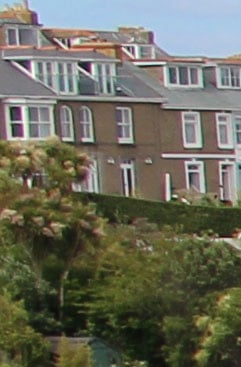 | 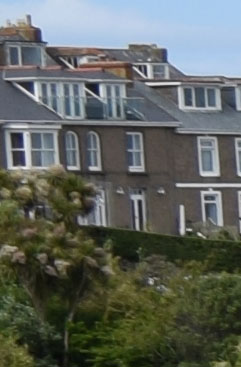 | 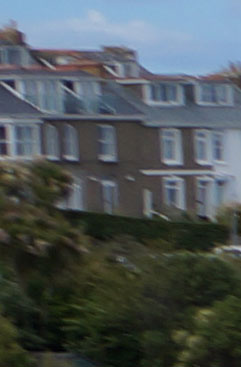 | ||
f5.6, 100 ISO | f5.6, 100 ISO | f5.6, 100 ISO | ||
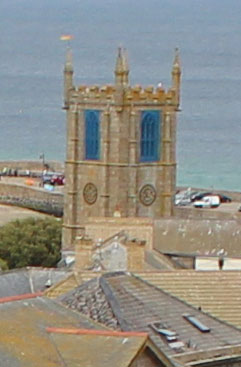 | 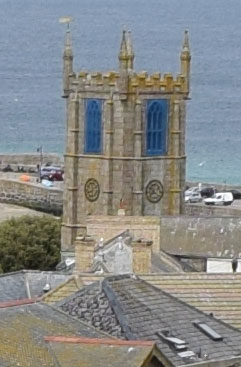 | 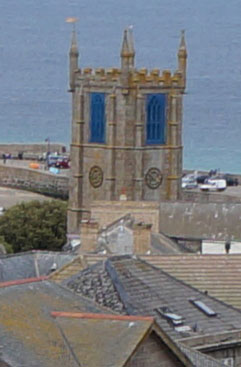 | ||
f5.6, 100 ISO | f5.6, 100 ISO | f5.6, 100 ISO | ||
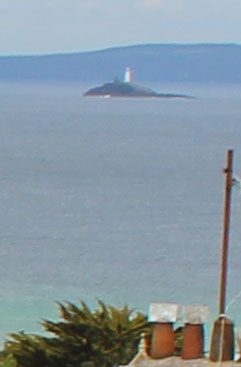 |  | 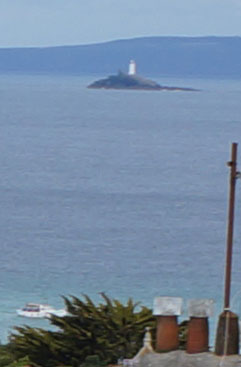 | ||
f5.6, 100 ISO | f5.6, 100 ISO | f5.6, 100 ISO | ||
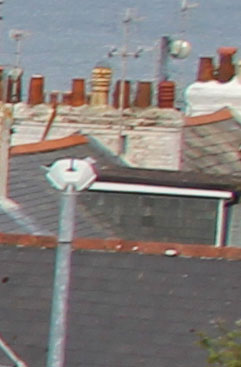 | 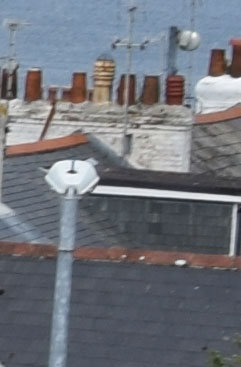 | 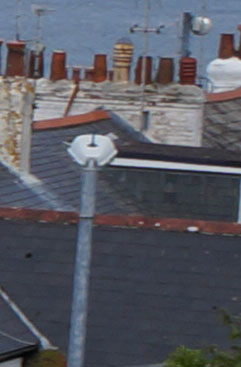 | ||
f5.6, 100 ISO | f5.6, 100 ISO | f5.6, 100 ISO |
Canon EOS T5 1200D vs Nikon D3300 vs Sony Alpha A3000 RAW quality
To compare real-life RAW performance I shot this scene with the Canon EOS T5 / 1200D, the Nikon D3300, and the Sony A3000 within a few moments of each other using their RAW +JPEG settings.
All three cameras were fitted with their respective 18-55mm f3.5-5.6 kit zooms and were adjusted to provide the same vertical angle of view.
For this test all three cameras were mounted on a tripod and set to Aperture Priority exposure mode. Image stabilisation was turned off and the camera settings were otherwise left on the defaults.
The image above was taken with the Canon EOS T5 / 1200D. I’d previously determined that the best results with the T5 / 1200D were produced with the lens set to f5.6 so I chose this in Aperture Priority mode; the camera metered 1/800 at 100 ISO. The Nikon D3300 and the Sony A3000 were also set to their base 100 ISO sensitivity settings and in Aperture Priority mode at f5.6 they too metered the same 1/800 shutter speed. As usual the 100 percent crops below are taken from the areas marked in red above.
In my comparison below you can see how the Canon T5 / 1200D compares against the Nikon D3300 and Sony A3000 when the cameras are set to RAW and their images processed with Adobe Camera RAW using identical settings: Sharpening at 50 / 0.5 / 36 / 10, Luminance and Colour Noise Reduction both set to zero, the White Balance set to 5800K / +6 tint, and the Process to 2012 with the Adobe Standard profile. The high degree of sharpening with a small radius enhances the finest details without causing undesirable artefacts, while the zero noise reduction unveils what’s really going on behind the scenes.
These RAW crops make for quite interesting viewing. Where the Canon T5 / 1200D JPEGs looked a little on the soft side by comparison with the Nikon D3300, the processed RAW files look much closer. The first crop from the Canon T5 / 1200D actually looks a little sharper than the corresponding crop from the D3300. As before, the first crop from the Sony A3000 is very blurry, due no-doubt to the kit zoom.
In the second crop I reckon the Canon T5 / 1200D sensor is resolving just as much detail as the Nikon D3300. There might be a smidgeon less detail in the Sony A3000 crop from the middle of the frame, but it’s almost too close to call. These three crops from close to the middle of the frame are the ones least affected by lens shortcomings and they show there’s very little to choose between the three sensors in terms of the amount of detail they resolve. It’s worth pointing out again though, with the Canon T5 / 1200D you’re getting 18 Megapixels, 20 from the Sony A3000 and 24 Megapixels from the Nikon D3300.
Now to see how these models compare at higher sensitivities check out my Canon T5 / 1200D noise results.
Canon EOS T5 / 1200D With EF-S 18-55mm III | Nikon D3300 With DX 18-55mm VR | Sony A3000 With 18-55mm OSS | ||
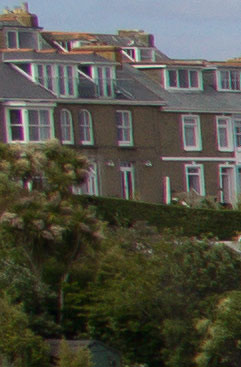 | 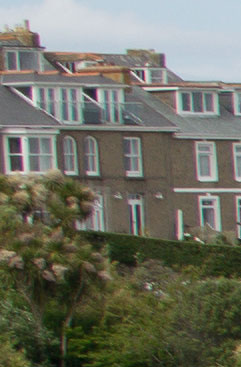 | 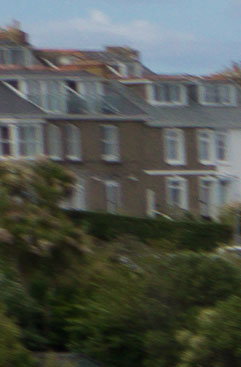 | ||
f5.6, 100 ISO | f5.6, 100 ISO | f5.6, 100 ISO | ||
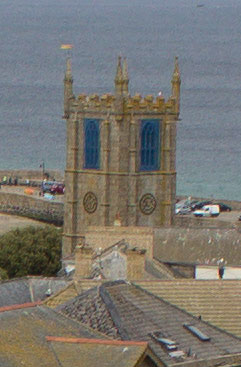 | 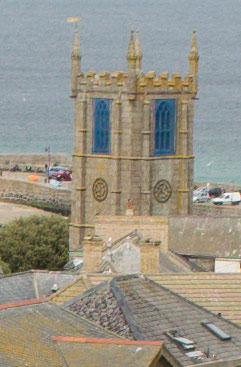 | 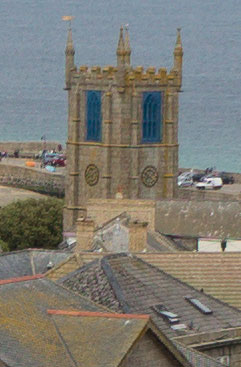 | ||
f5.6, 100 ISO | f5.6, 100 ISO | f5.6, 100 ISO | ||
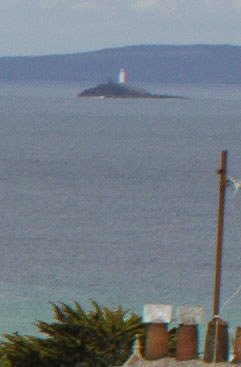 | 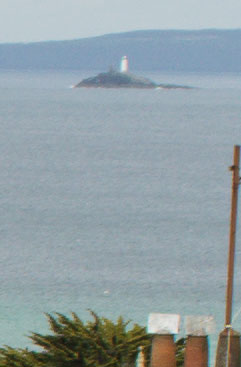 | 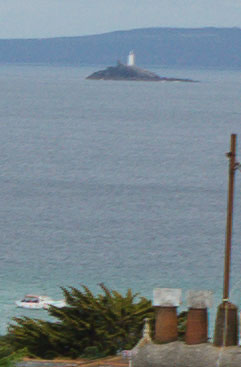 | ||
f5.6, 100 ISO | f5.6, 100 ISO | f5.6, 100 ISO | ||
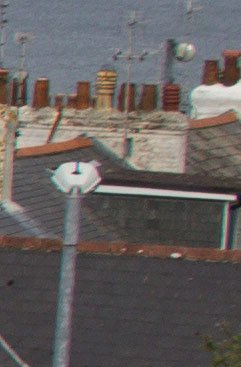 | 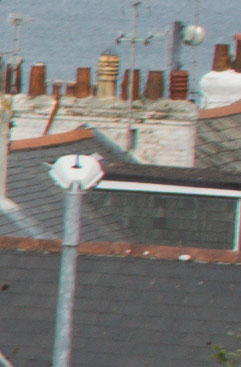 | 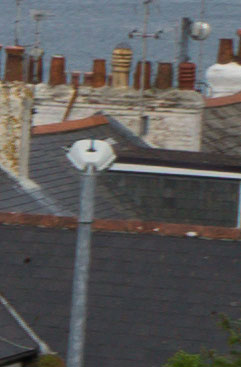 | ||
f5.6, 100 ISO | f5.6, 100 ISO | f5.6, 100 ISO |
Canon EOS T5 1200D vs Nikon D3300 vs Sony Alpha A3000 RAW noise
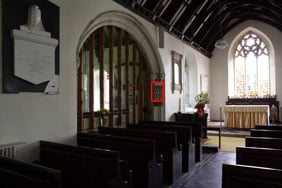
To compare RAW noise levels under real-life conditions, I shot this scene with the Canon EOS T5 / 1200D, the Nikon D3300, and the Sony A3000, within a few moments of each other using their best quality JPEG settings at each of their ISO sensitivity settings.
All three cameras were fitted with their respective 18-55mm f3.5-5.6 kit zooms and were adjusted to provide the same vertical angle of view.
For this test all three cameras were mounted on a tripod and image stabilisation was turned off.
The image above was taken with the Canon EOS T5 / 1200D. The T5 / 1200D was set to Aperture Priority mode and at its base 100 ISO sensitivity setting with the aperture set to f5.6 metered a shutter speed of 0.4s . Both the Nikon D3300 and Sony A3000 were also set to 100 ISO and f5.6 and both metered the same 0.4s shutter speed.
Just to a recap that the sensors in the Canon EOS T5 / 1200D, Nikon D3300 and Sony A3000 have resolutions of 18, 24 and 20 Megapixels respectively, so the crop areas and size of detail varies accordingly. As you’d expect, all three models produce very good results at the lower end of the sensitivity range. It’s difficult to see much of a difference between them, but the Nikon D3300 100 ISO crop looks a little bit cleaner than the other two to me.
Below you can see how the Canon T5 / 1200D compares against the Nikon D3300 and Sony A3000 when they are set to RAW and their images processed with Adobe Camera RAW using identical settings: Sharpening at 50 / 0.5 / 36 / 10, Luminance and Colour Noise Reduction both set to zero, the White Balance set to 4100K, and the Process to 2012 with the Adobe Standard profile. The high degree of sharpening with a small radius enhances the finest details without causing undesirable artefacts, while the zero noise reduction unveils what’s really going on behind the scenes.
As with the JPEG results it’s very difficult to spot much of a difference bewtween these three APS-C models in the lower part of the sensitivity range. From their base 100 ISO settings up to 3200 ISO all three produce very similar looking results, with an equivalent increase in noise at each step up the range.
At the very upper end of the range the 3200 ISO crop from the Nikon D3300 looks to have less colour noise than both the Canon T5 / 1200D and Sony A3000 and, impressively, the 25600 ISO crop from the D3300 looks a little less noisy than the 16000 ISO crop from the A3000. But where it really matters, up to 3200 ISO there’s very little in it. So if you were worrying that the higher megapixel count on the Nikon and Sony sensors rendered them more susceptible to noise at high ISO sensitivity settings, well, you needn’t.
Now check out my Canon T5 / 1200D sample images for more real-life results across its sensitivity range, or head straight to my verdict.
|
Canon EOS T5 1200D vs Nikon D3300 vs Sony Alpha A3000 JPEG noise
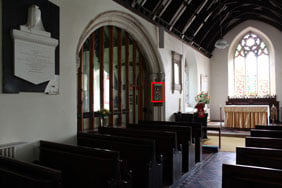
To compare noise levels under real-life conditions, I shot this scene with the Canon EOS T5 / 1200D, the Nikon D3300, and the Sony A3000, within a few moments of each other using their best quality JPEG settings at each of their ISO sensitivity settings.
All three cameras were fitted with their respective 18-55mm f3.5-5.6 kit zooms and were adjusted to provide the same vertical angle of view.
For this test all three cameras were mounted on a tripod and image stabilisation was turned off. Noise Reduction was set to the default options on each camera, although I disabled any automatic contrast-enhancing modes as these can artificially introduce noise. As such, Auto Lighting Optimizer on the Canon, Active D-Lighting on the Nikon and Auto DRO on the Sony were disabled.
The image above was taken with the Canon EOS T5 / 1200D. The T5 / 1200D was set to f5.6 in Aperture Priority mode and at its base 100 ISO sensitivity metered a shutter speed of 0.4s. Both the Nikon D3300 and Sony A3000 were also set to 100 ISO and f5.6 and both metered the same 0.4s shutter speed.
Just to a recap that the sensors in the Canon EOS T5 / 1200D, Nikon D3300 and Sony A3000 have resolutions of 18, 24 and 20 Megapixels respectively, so the crop areas and size of detail varies accordingly. As you’d expect, all three models produce very good results at the lower end of the sensitivity range. It’s difficult to see much of a difference between them, but the Nikon D3300 100 ISO crop looks a little bit cleaner than the other two to me.
There’s a clear difference between the 100 ISO and 200 ISO crops, with the noise ramped up by an equivalent amount on all three, so the D3300 crop is still looking a little better than the other two here. It’s the same story up to the 800 ISO mark, but the small advantage the Nikon D3300 enjoys is fairly marginal – you be unlikely to see a difference unless pixel peeping. And by 1600 ISO the margin looks like it may have diminished to zero, at this setting all three look more or less the same.
Even in the upper end of the sensitivity range, it’s difficult to spot much of a difference in the noise levels. The T5 / 1200D’s saturation is dropping off and there’s more colour noise in the T5 / 1200D 12800 ISO crop than in the D3300. And the 12800 ISO crop from the Sony A3000 is looking very fuzzy compared with the other two. Where the T5 / 1200D tops out at 12800 ISO, the D3300 offers an additional 25600 position though the noise is overwhelming. The same could be said of the A3000’s 16000 ISO upper limit. All the same, these are worth having for emergency low light shooting where a very noisy shot might be better than an underexposed one.
But what happens when you bypass their default in-camera styles and process their RAW data with the same settings? Find out in my Canon T5 / 1200D RAW noise comparison, or head straight over to my Canon T5 / 1200D sample images to see some more real-life shots in a variety of conditions.
| |||||||||||||||||||||||||||||||||||||||||||||||||||||||||||||||||||||||||||||||||||||||||||||||||||||||||||||||||||||||||||||||||||||||
